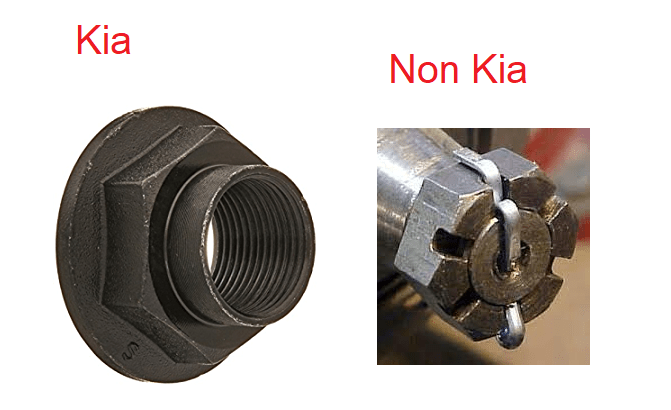Photo misleading; those aren't the same applications.
The left one is a common design for the nut that holds a CV axle shaft in place through the wheel bearings, and it isn't just Kia (and Hyundai by extension), it is very common. What isn't shown is that after installation, you stake the nut in place (over notches in the end of the shaft) to lock it in place.
The right one is how my trailer wheel bearings are. And motorcycle rear axles.
Couple key differences. Left one can be torqued in place and locked in position wherever it ends up. Right one, you are stuck with increments where the holes line up. Left one is usually (in all that I have seen) in designs where the bearing preload is set by the bearing inner races being clamped together. Right one is more suitable for old skool separate tapered roller bearings where you set the preload or clearance manually, which might mean the nut isn't all that tight. In the CV shaft design (left), that nut spins with the wheel. In the trailer-wheel, motorcycle axle, and non-driven wheel designs that use a stationary stub axle and a nut with a cotter pin, the nut and cotter pin are not rotating.



